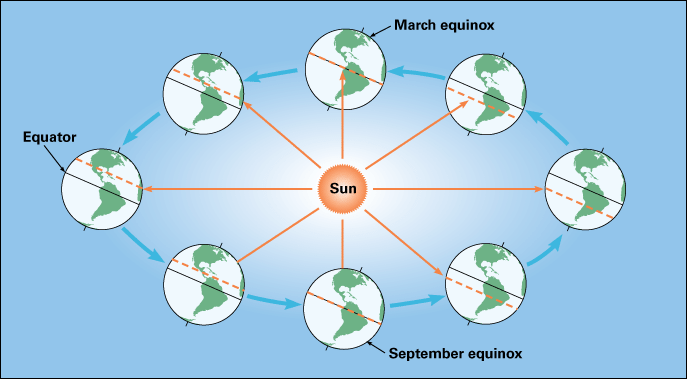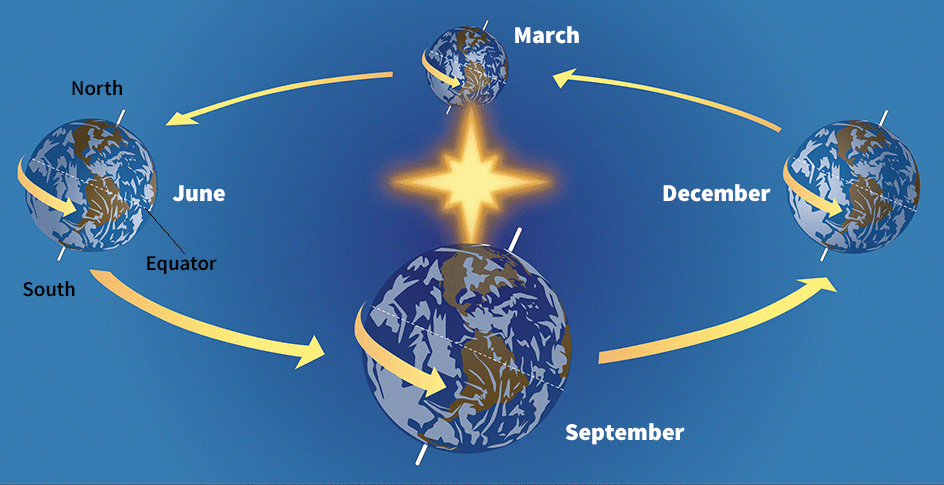Spring Has Sprung, Autumn Falls
Tuesday, March 20th, 2012March 20, 2012
The March equinox has marked the official start of spring in the Northern Hemisphere and of autumn in the Southern Hemisphere. At the March equinox, the sun is directly above the Earth’s equator. On the days of the equinox, all places on Earth receive approximately 12 hours of sunlight, though the exact amount of daylight in different locations varies by as much as several minutes. All places also have approximately 12 hours of darkness.
The equinox officially occurred at 5:14 Coordinated Universal Time (UTC) on Tuesday, March 20, at the prime meridian at the Royal Greenwich Observatory in Greenwich, England. In the United States, 5:14 UTC was 10:14 p.m. in Los Angeles (Pacific Standard Time) on Monday, March 19, and 1:14 a.m. in New York City (Eastern Daylight Time) on Tuesday. In Sydney, Australia, the March equinox began at 4:14 p.m. (Australian Eastern Daylight Time) on March 20.
The March equinox is one of two equinoxes that take place as Earth completes a full orbit of the sun. The March equinox occurs on March 19, 20, or 21. The September equinox takes place on September 22 or 23. This year’s spring equinox is the earliest since 1896. As a result, winter was only 88.994 days long.

The equinoxes are the two moments of the year when the sun is directly above the equator. As Earth moves in its orbit around the sun, the position of the sun changes in relation to the equator, as shown by the dotted lines in this diagram. (World Book diagram)
The positions of the two equinoctial points do not remain the same from year to year. They shift westward extremely slowly–about 1 degree every 70 years. This gradual movement of the points, called the precession of the equinoxes, is caused by a slight change in the direction of Earth’s axis of rotation. The change results mainly from the gravitational pull of the moon and the sun on Earth’s equatorial bulge.
In the United States, the start of spring has been accompanied by record high temperatures throughout much of the nation. On March 14, 400 locations around the United States reported record highs. Even the 68 °F (20 °C) temperature at Duluth, Minnesota, which was far below the 80 °F (27 °C) reported in Miami, Houston, and Chicago, was 35 Fahrenheit degrees (19 Centigrade degrees) above average.
Additional World Book articles:



